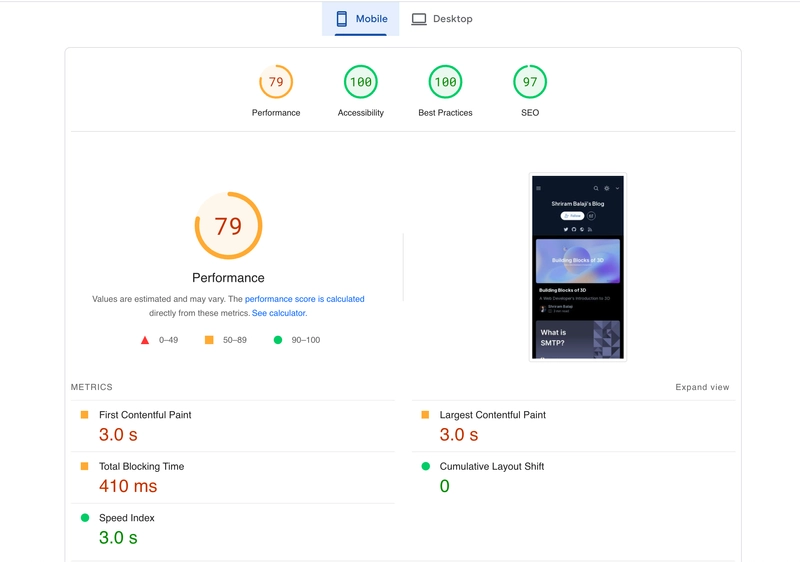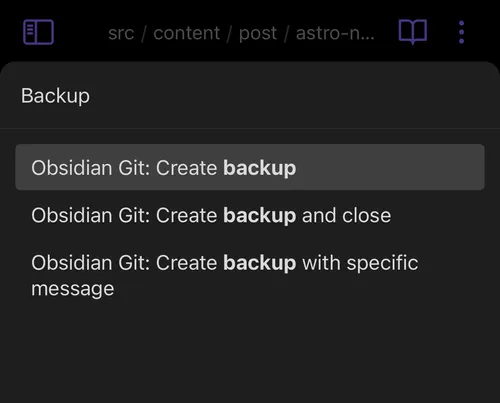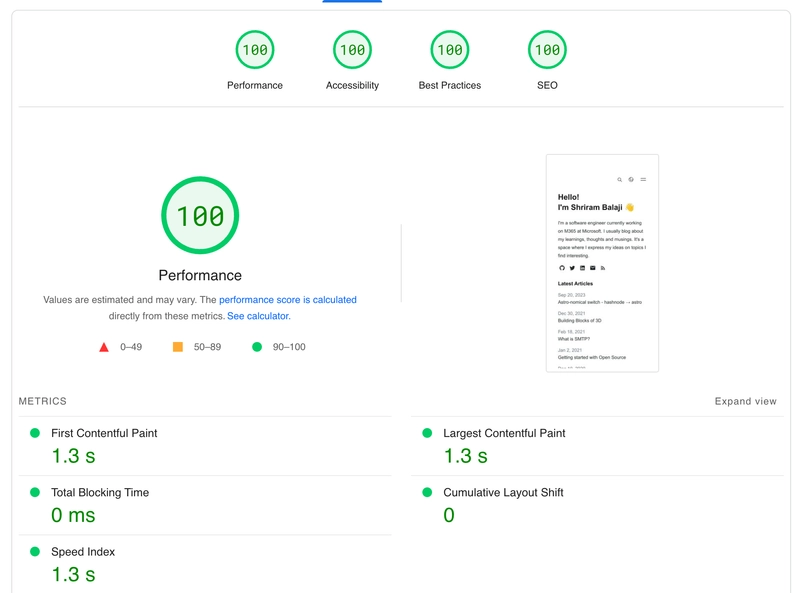Astro-nomical switch - hashnode → astro
| 6 min read
I’ve been using hashnode.dev for the last couple of years as my primary blogging platform. It has served me well, but I think it’s time for a change.
Why I’m moving away from hashnode?
Don’t get me wrong, hashnode is great to get started and helps build a habit of writing. But over time I’ve realized that I don’t really write a lot, but when I do - I want it to look the way I want. Let me explain.
Custom CSS is difficult to maintain
Hashnode had custom CSS for a couple of years, and I’ve raved about in the past.
But over time, as it happens with custom stylesheets - things broke. The theming was inconsistent with my site at shrirambalaji.com and it was hard to maintain. In hindsight, I should have realized that adding custom stylesheets without having any form of guarantee of it not breaking, would eventually turn out to be an issue.
I remember spending a couple of days to get it to match my theme when I first set it up, but that was mainly because I couldn’t find extensive theming options on hashnode, and felt it to be limiting. (whether or not I write often - atleast the site should look consistent 😅)
Another slightly tangential issue was with code highlighting. I didn’t particularly like the highlighting theme, and also the code theme didn’t switch when going from Dark to Light.
Lack of control on initial load performance
These are screenshots from running pagespeed insights on my hashnode blog


Around 760ms was being spent on just fonts, and I couldn’t do anything about it 🙁
This isn’t a post to dunk on hashnode - I know that it’s a small team doing incredible work!
I also had some interesting things I wanted to try and building a blog felt like the perfect playground:
- I’ve started using Obsidian as my primary way to write down notes. I wanted to experiment with this for publishing blogs from anywhere.
- I’ve tried Astro for some projects, but wanted to try it out since their 3.0 release. Content Collections also seemed like a great way to manage content.
The Process
- Export documents from hashnode
- Setup Astro, (preferably use a starter)
- Update theming, setup syntax highlighting (shiki) with support for theme switching
- Setup Obsidian-Git Sync
Exporting Documents from Hashnode
I originally expected exports to be markdown files, but to my surprise it was a json dump of all my articles. Fortunately, hashnode has a nifty Github Backup integration that backed up all my articles as markdown files. Neat!
Setting up Astro
Since I wanted to move over things quickly and not spend a lot of time crafting the blog, a astro starter / theme was of essence. After searching a bit on Astro’s Theme Search, I found an opinionated starter that I liked - Astro Theme Cactus by Chris Williams.
Features
The feature list was exactly what I was looking for, and also supported View Transitions ✨
- Astro v3.0
- View Transitions from Astro
- TailwindCSS with Dark / Light Mode support
- Accessible, semantic HTML markup, responsive & SEO-friendly
- Astro Assets Integration for optimised images
- MD & MDX posts
- Satori for creating open graph png images
- Pagination
- Automatic RSS feed
- Shiki code syntax styling
- Auto-generated sitemap
- Pagefind static search library integration
- Astro Icon svg icon component
Theming and Code Highlighting
Since my portfolio was also on tailwind, it was pretty straightforward to port styles. I just had to update a couple of css-variables and replace the fonts to use Inter (probably the best font ever, thanks @rsms). I still had to make some more stylistic changes to make the starter attuned to my liking (changing the appearance of tags, switching from a monospace font to sans-serif font for readability etc.,)
But, I ran into some troubles with code highlighting. The default Astro + Shiki configuration didn’t allow me to switch code themes.
Shiki generates themes at build time, client-side theme switching support is not built in.
However, Shiki supports adding CSS Variables that allow to customize tokens in a theme individiually, and then changing those variables for light & dark theme.
Shikiji to the rescue
Shikiji, a pure ESM focused rewrite of Shiki has native support for dark-light mode theme switching. Nate Moore who co-created astro suggested using this as an alternative to using CSS variables with Astro + Shiki in their discord community. Thanks Nate!
$ pnpm add rehype-shikiji
We need to disable the astro’s in-built shiki syntax highlighting by setting it to false, and configure rehype-shikiji as a plugin in astro.config.mjs.
export default defineConfig({
markdown: {
syntaxHighlight: false,
rehypePlugins: [
[
shikiji,
{
themes: {
light: "github-light",
dark: "github-dark",
},
},
],
],
})
Voila! We have beautiful syntax highlighting that switches between dark & light.
Publishing Blogs from Anywhere with Obsidian
I wanted to be able to draft articles from anywhere, and possibly turn this site into some sort of a digital garden. Obsidian has been amazing, I loved the idea of it being “local-first” and tbh Obsidian was a breathe of fresh air, in a sea of notetaking apps. I’ve been using it for a couple of years and as someone who never used to take notes - Obsidian has helped build a habit.
Narrator: Can Obsidian help build a habit of writing blogs too, only time will tell.
Obsidian Git & Plugins
Obsidian-git is a plugin that supercharges an Obsidian vault with features like: auto backup, sync, pull, push, fetch, clone and treat any git repository as a vault.
For setting it up on the web, I followed this article Fleeting Notes - Obsidian Git Setup. This was pretty straightforward to do, and I was able to set it up pretty quickly.
On mobile, I had some hiccups but Obsidian Git - Mobile Docs was pretty descriptive. I wanted to have only the content directory of this site, in an obsidian vault but that seemed impossible, so I just resorted to using the entire site as an obsidian vault.
As a workaround, I tried the File Hider plugin to hide the rest of the src folder. I wanted to write MDX to use Astro components in my blogposts, so I also had to install mdx-as-md which allows editing MDX files within Obsidian.
Auto Deploying with Vercel
Thanks to vercel, anytime Obsidian-Git made a backup ie. stage, commit and push behind the scenes - the site gets auto-deployed with the latest changes. The fun part being - I don’t even need access to my laptop for it.

Also, another cool thing in this starter is that it allows me to work on draft posts by setting draft to true in the frontmatter, which are viewable only in DEV mode.
---
draft: true
---
Running Pagespeed Insights
Ah, a perfect 100 🥳. Isn’t that a sight!

I’m fully aware that Lighthouse scores don’t always reflect perceived user experience based on many writings but hey - gotta be happy with the 100.
You can view the source code for this blog on GitHub. It’s open-source, so feel free to contribute to it, fork it (but do attribute it back).
Astro and the ecosystem around it has enabled me to make this change in a couple of days.
Looking forward to write more here!